Building & Running Multi-Arch Docker Containers
 Pratik Bapat
Pratik BapatMulti-Arch Docker Builds: A Practical Approach
🚀 Initial Setup Tasks
✅ Task 1: Verify Your System’s Architecture
Before we begin, check your system’s CPU architecture using:
uname -m
Common outputs:
x86_64: Standard 64-bit Intel/AMD CPU.arm64: ARM-based architecture (e.g., AWS Graviton, Raspberry Pi 4).

✅ Task 2: Enable Docker Buildx for Multi-Arch Builds
Docker Buildx allows cross-platform builds. Enable it with:
docker buildx create --name mybuilder --use
docker buildx inspect --bootstrap
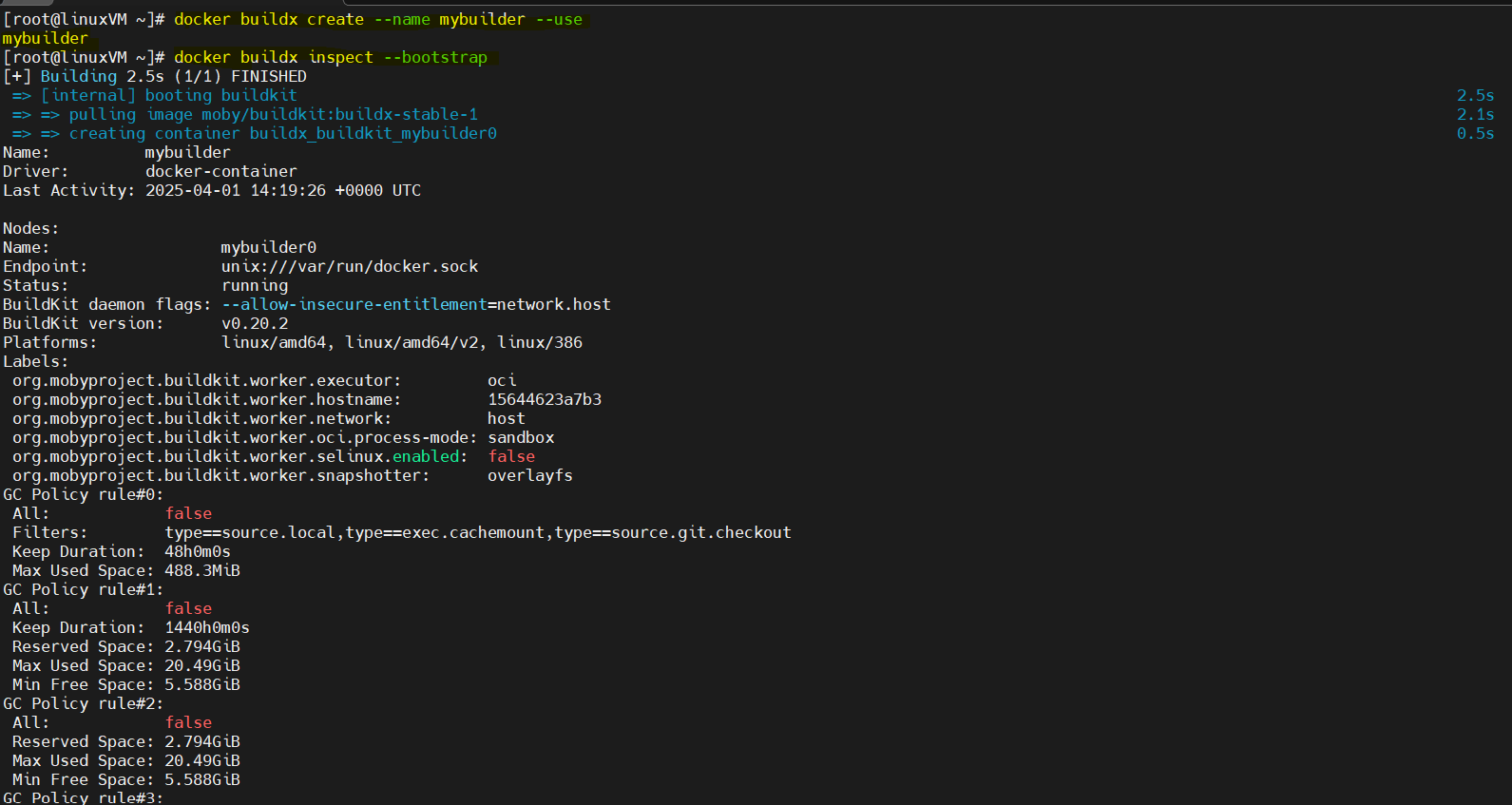
✅ Task 3: Install QEMU for CPU Emulation
QEMU enables running different CPU architectures in containers.
docker run --rm --privileged multiarch/qemu-user-static --reset -p yes
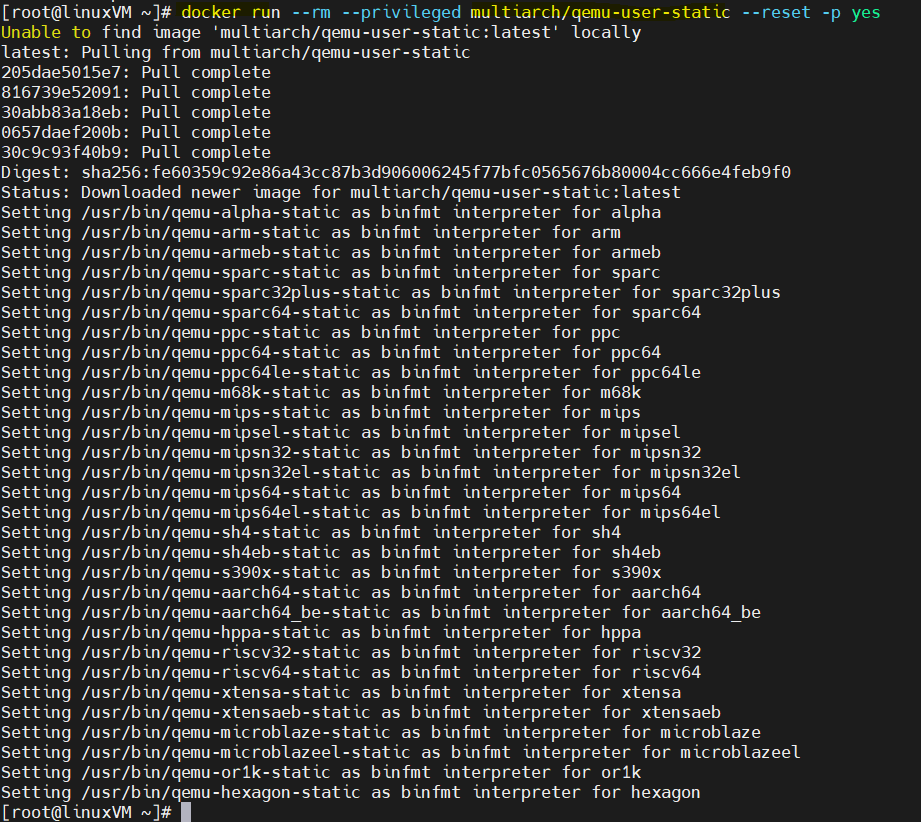
✅ Task 4: Run an ARM-Based Image on x86_64
Test if your system can run an ARM image:
docker run --rm --platform linux/arm64 busybox uname -m
Expected output: aarch64, confirming ARM emulation works.

🔥 Multi-Arch Challenges
🔹 Challenge 1 & 5: Build a multi-arch image supporting linux/amd64, linux/arm64, and linux/arm/v7. Build a multi-arch Alpine-based image with a minimal footprint.
Create a Dockerfile:
FROM alpine:latest
RUN apk add --no-cache bash
CMD ["echo", "Hello from multi-arch Docker!"]
Build and push multi-arch images:
docker buildx build --platform linux/amd64,linux/arm64,linux/arm/v7 \
-t pratikbapat14/multi-arch-test:latest --push .
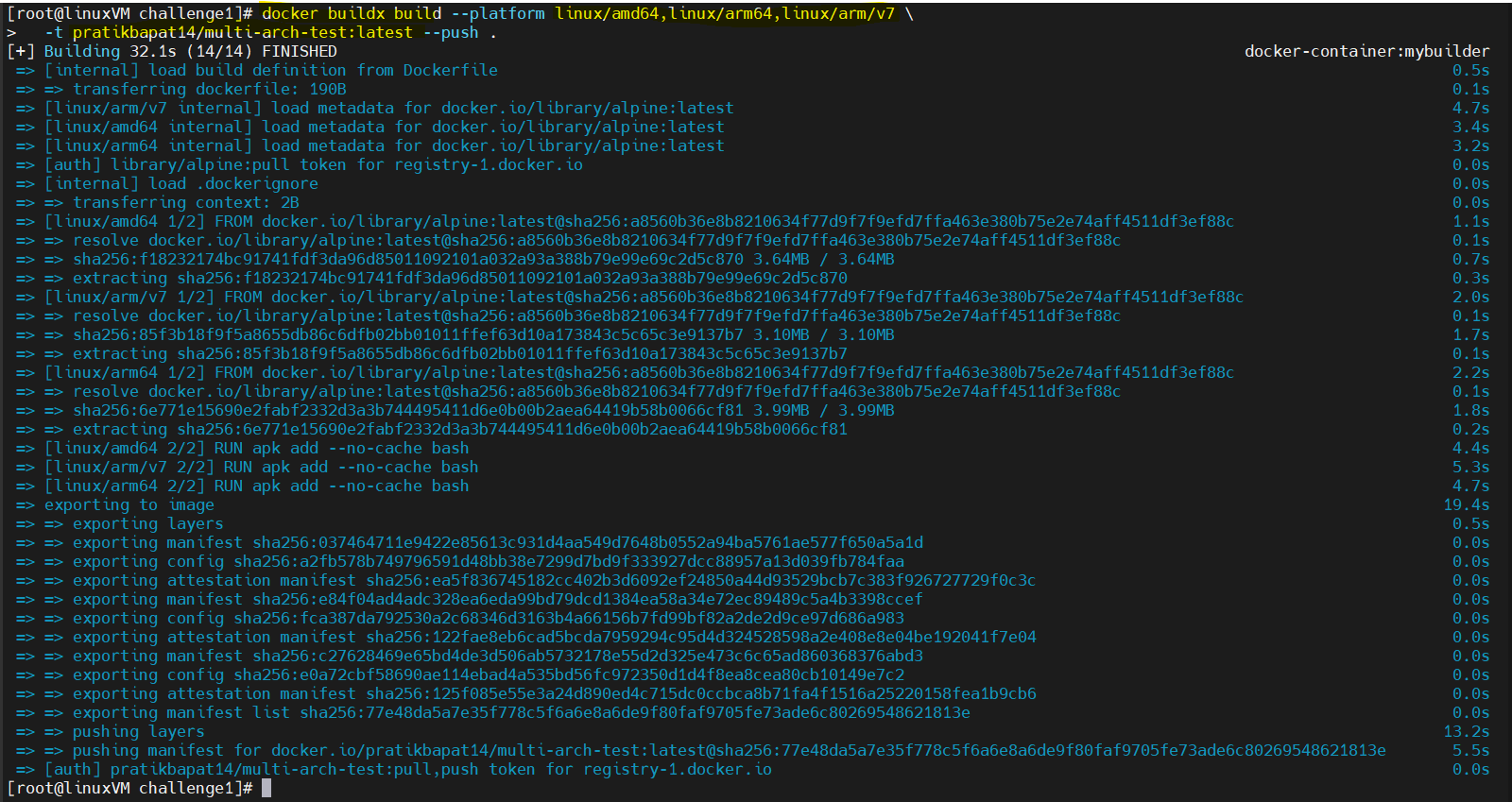
Check in dockerhub if new repository is created

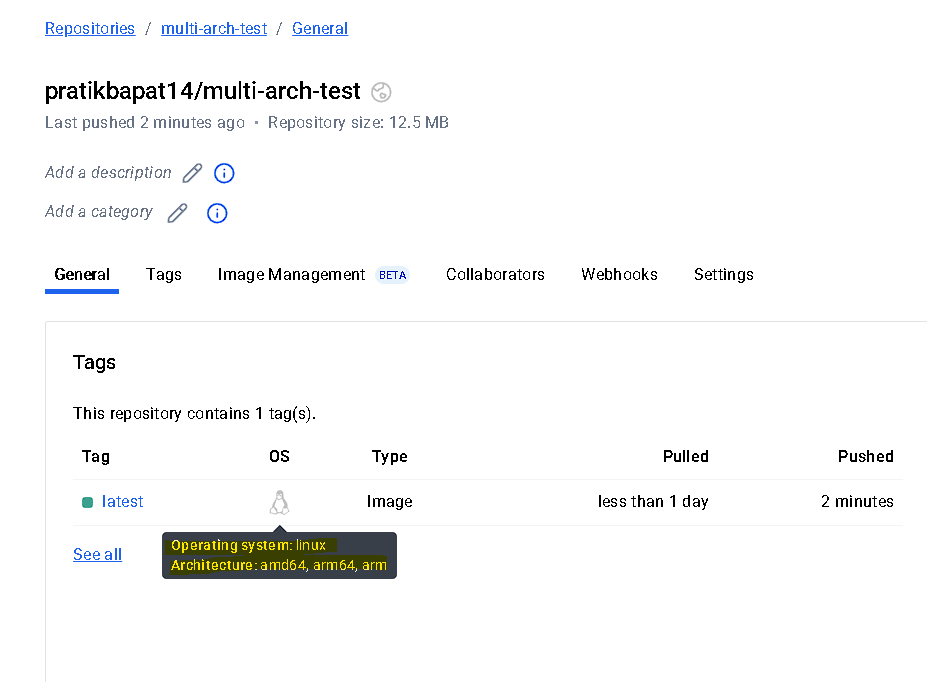
🔹 Challenge 2: Push the multi-arch image to Docker Hub & Verify the Docker Manifest of your pushed image
Check the architectures supported in your pushed image:
docker buildx imagetools inspect pratikbapat14/multi-arch-test:latest
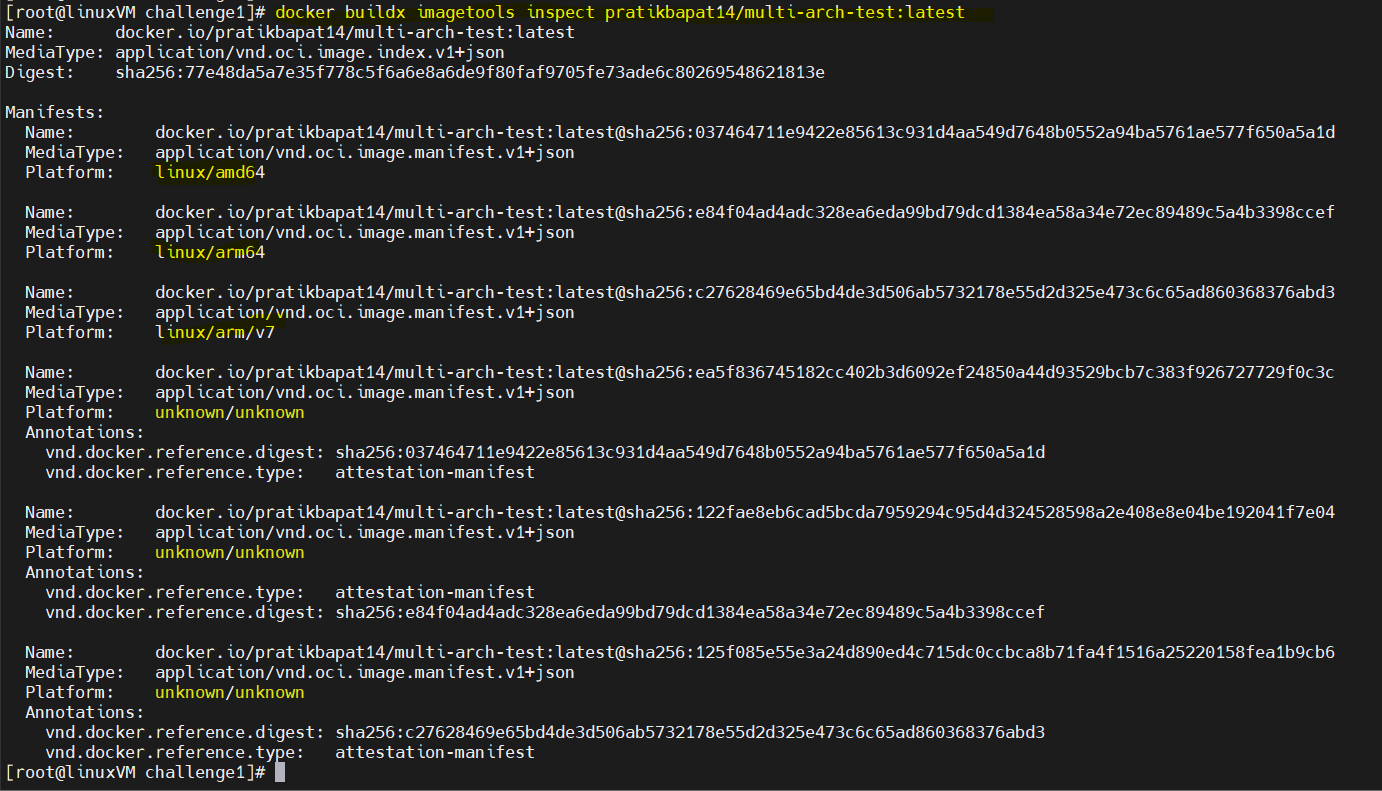
🔹 Challenge 3: Deploy your multi-arch image on AWS Graviton (ARM64) & a regular EC2 x86_64 server.
Launch an EC2 instance with:
Graviton (ARM64): Choose an
a1,c6g, ort4ginstance.x86_64: Choose a
t3,m5, orc5instance.
On both instances, install Docker and pull your image:
Note: we will be deploying this on same VM which is of x86_64 architecture
docker run --rm pratikbapat14/multi-arch-test:latest

🔹 Challenge 4: Use Docker Squash --squash to minimize the image size while keeping multi-arch support.
Reduce image size by squashing layers:
docker buildx build --platform linux/amd64,linux/arm64,linux/arm/v7 \
--squash -t pratikbapat14/multi-arch-squashed:latest --push .
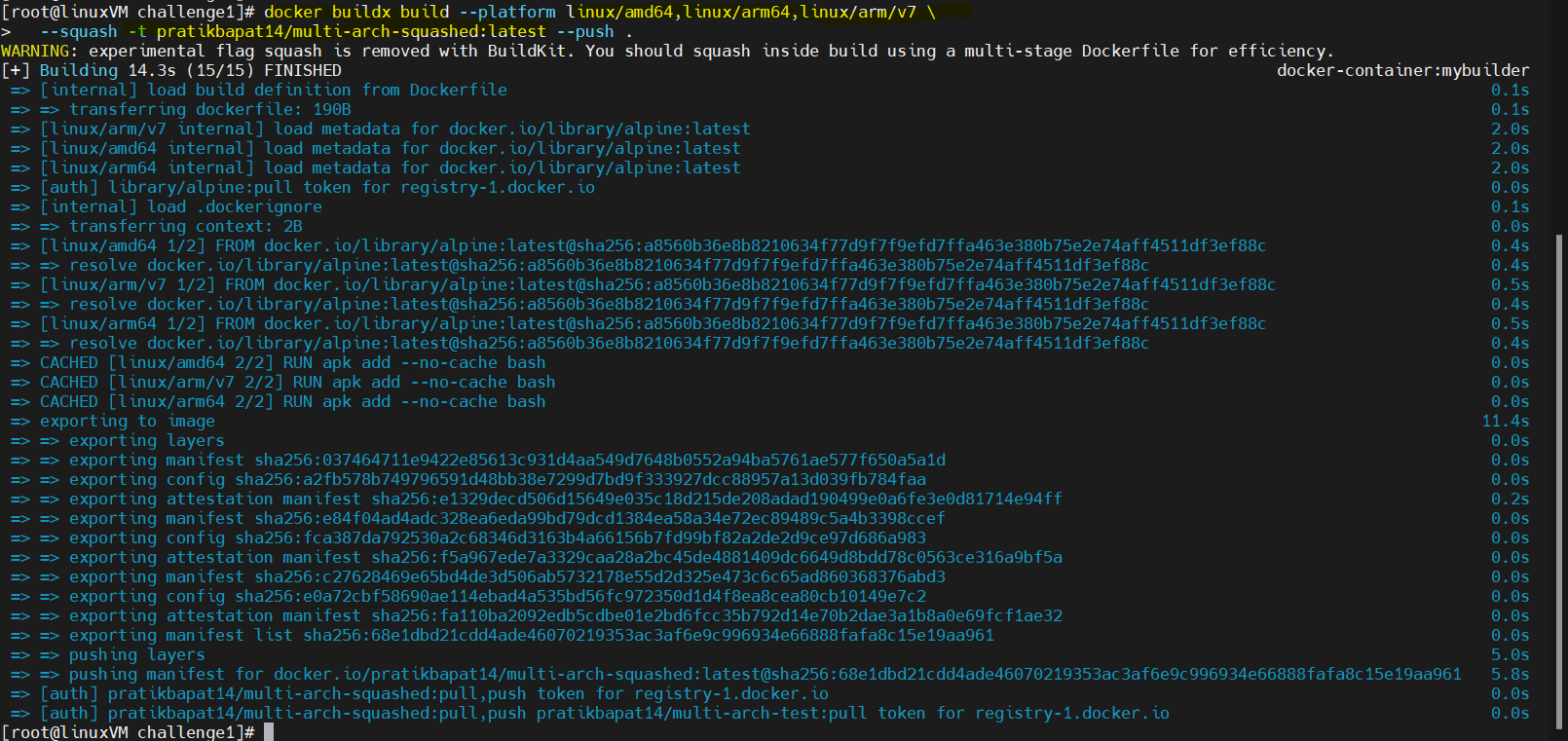
Check in dockerhub if new repository is created

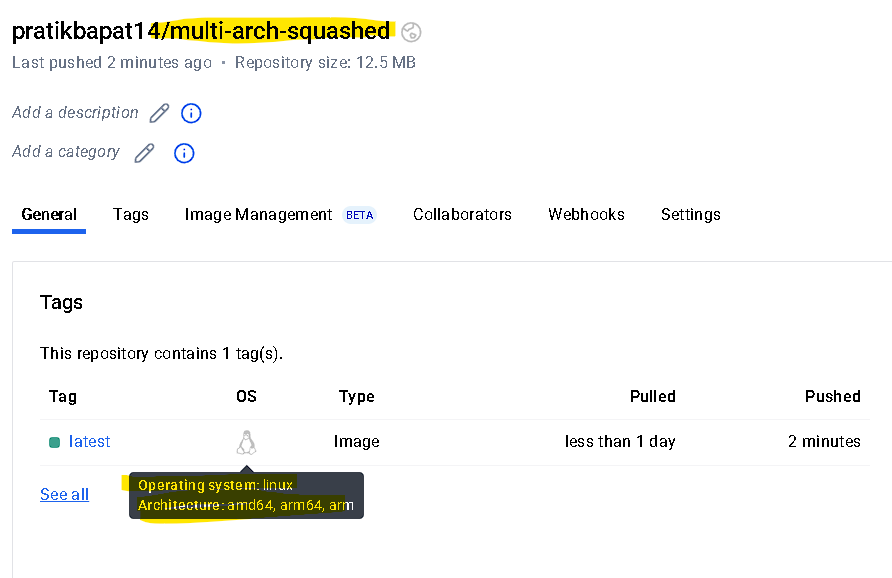
🔹 Challenge 6: Deploy a Raspberry Pi-specific multi-arch image and verify execution. (Optional but HIGHLY RECOMMENDED)
If you have a Raspberry Pi, install Docker and run:
docker run --rm pratikbapat14/multi-arch-test:latest
This validates ARM/V7 support.
Subscribe to my newsletter
Read articles from Pratik Bapat directly inside your inbox. Subscribe to the newsletter, and don't miss out.
Written by
